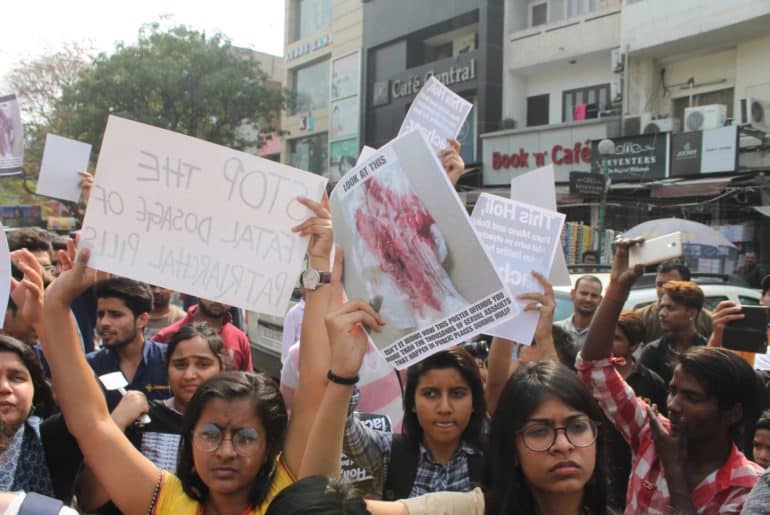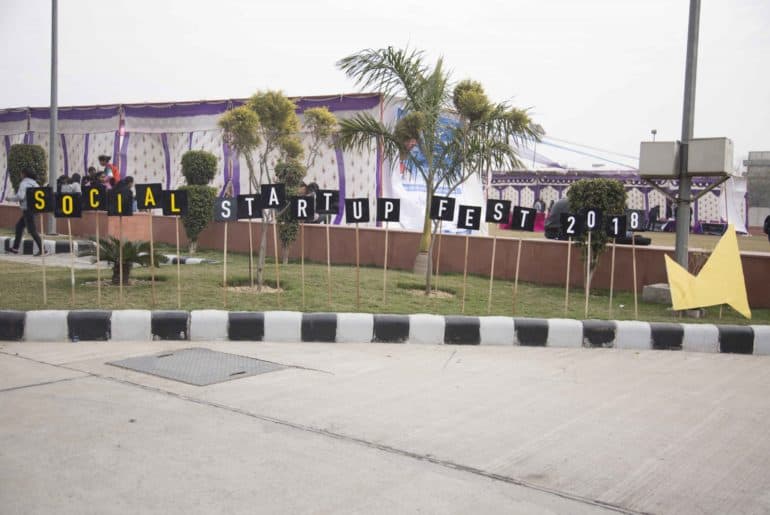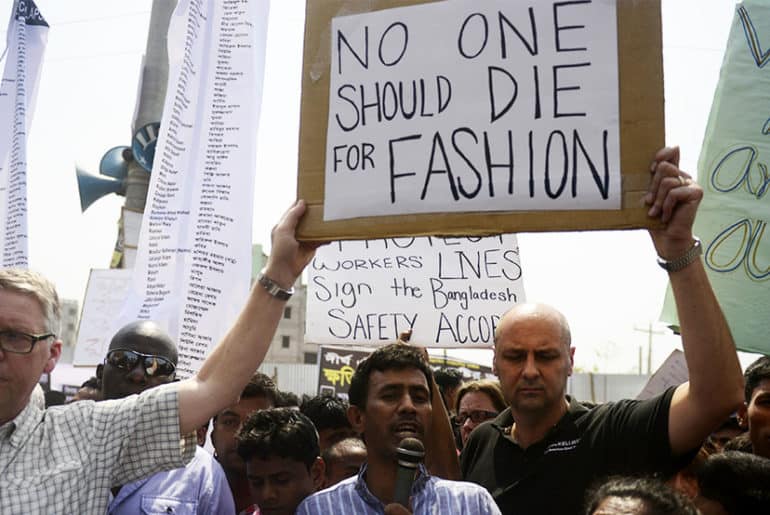The University of Delhi has witnessed innumerable harassment cases in recent times, despite a greater sense of awareness. Here is a look at the unfortunate number of such incidents to shed light and much-needed awareness on the same.
Women across the world bear everyday harassment, catcalling, and heinous crimes. However, one would assume that women are relatively safer in a campus space like the University of Delhi (DU). Unfortunately, innumerable harassment and assault cases have taken place in this renowned institution. According to a Gender Study Group report of DU in 1996, “Nearly 38.1% of the women student respondents (hostellers and non-hostellers) have experienced harassment in the form of leaching, commenting, and molestation.” These numbers reflect how commonplace everyday harassment of women is.
1) Kawalpreet Kaur harassed at Satyawati College: Kawalpreet Kaur, a student activist from All India Students Association (AISA), accused of being manhandled and silenced while being present at Satyawati College for a panel discussion on women’s safety. The accused were believed to belong to Akhil Bharatiya Vidyarthi Parishad (ABVP), the student wing of Rashtriya Swayamsevak Sangh (RSS).
2) Professor harassed student at Daulat Ram College: A first-year student from Daulat Ram College accused a professor of the Political Science Department of harassing her. He was believed to have made multiple inappropriate remarks on the appearance of the student, along with making several advances to meet outside the college premises. The incident came to light when the student filed an First Information Report (FIR), following which protests broke out in the college.
3) List of sexual predators in Indian academia: Raya Sarkar, a law student, compiled a list of sexual predators in Indian Universities. She claimed to have put-together the list with inputs directly from the students themselves. The list generated intense debate on social media. Some accused it of being ineffective and baseless while others hailed it as a revolutionary idea that gave an agency to the voices of victims.
4) Sexual harassment at Ramjas College: In 2007, the Vice-President of Ramjas College, B.N. Ray, was accused of sexual harassment by male students from the college. The victims, all of whom hailed from the North-East, banded together to speak out against him. It was in 2017, approximately a decade later, that a subcommittee of the College Complaints Committee (CCC), set by the directions of the High Court, found him guilty. It is alleged that Mr. Ray continued to be on the college payroll until retirement in 2015, even though he was not allowed to step into college.
5) Priyadarshini Mattoo’s Murder: On 23rd January 1996, Priyadarshini Mattoo, a final year student of University of Delhi’s Law Centre was murdered by Santosh Kumar Singh, a graduate of the Law Centre. The accused had sexually and mentally harassed the deceased on multiple occasions following which she was provided police protection, but the accused killed her in her home with 19 injuries on her body and attempted rape.
6) Pavitra Bharadwaj suicide case: On 30th September 2013, Pavitra Bhardwaj of Bhim Rao Ambedkar College immolated herself in front of the Delhi Secretariat. She later succumbed to her injuries on 7th October. She had accused then Principal, G.K. Arora, and another colleague, Ravinder Singh, of sexual and mental harassment in her suicide note. After multiple protests by the Delhi University Teacher’s Association (DUTA), the principal was suspended. However, his suspension was later revoked; an action which generated an outcry.
7) Harassment during Crossroads 2017: A Miranda House student, Meghna Singh, was sexually harassed during KK’s concert at Crossroads 2017, the annual cultural festival of Shri Ram College of Commerce (SRCC). When she returned home after the concert she noticed white spots on her black trousers, that were evident semen stains. The student received a lot of flak and was trolled on social media. Meghna’s incident generated a lot of buzz and created a conversation about harassment in college fests.
8) Semen-filled balloon pelting around Holi: Students from Lady Shri Ram College for Women (LSR) and Jesus and Mary College (JMC) were pelted with balloons that were allegedly filled with semen around Holi. A woman in Amar Colony was pelted on the head with a semen-filled balloon on 28th February 2018. In response to such deeply disturbing events, the LSR Students’ Union organised a protest on 1st March, along with students of JMC.
9) Bharti College student harassment case: A final-year political science student of Bharti College wrote to the Vice-Chancellor accusing one of her professors of sexual harassment. The student did not approach the Internal Complaints Committee (ICC) because of its non-functioning nature. The Committees Against Sexual Harassment (CASH) of the University which later changed to ICC, is a presence only on papers in 70% colleges of the University.
10) DRC Students harassed by Bank Employee: A first year student from Daulat Ram College was harassed by an Indian Overseas Bank employee, who worked on the campus branch of the same. The accused had earlier helped the victim when she was having trouble with funds in relation to her mother’s operation. He later offered to drive her to college, since he lived in the same area. The incident was shared with an ABVP activist within the college and an FIR was later filed against the accused.
11) Rape threats against Gurmehar Kaur: Gurmehar Kaur, a student from Lady Shri Ram College (LSR), protested against ABVP during the Ramjas controversy which took place in early 2017. In response, a year old video of her speaking for peace as a part of her “#ProfileForPeace campaign” was dug out and used to mercilessly troll her, even by known public figures. Kaur was branded as an “anti-national” and received multiple rape threats on social media. She subsequently dealt with the issue with courage and is now an activist and published author.
12) Aditi Mahavidyala Student harassed: In January of 2016, a student of Aditi Mahavidyalaya accused a visually impaired professor of harassing her by sending her inappropriate text messages. She added that he sent her inappropriate videos and called her at odd hours. The student said that the college principal, Mamta Sharma, had been unsupportive after which she decided to reach out the police. The principal dismissed these claims and said that the matter had been referred to the Internal Complaints Committee (ICC) for further probing.
These cases are a handful amongst all the incidents of harassment and violence that take place on campus. A significant number of cases go unreported, unbelieved, and silenced. Most colleges lack an efficient and systematic Sexual Harassment Redressal Committee which further alienates victim’s and breeds complacence and silence towards harassment. Often authorities and friends do not believe the victims narrative or remain neutral which adds to the problem. The problem of trolling is prevalent as is obvious in the case of Gurmehar Kaur and Meghna Singh, both of whom were mercilessly shamed on social media. Mr. B.N. Ray who was found guilty by an ICC almost a decade after the accusations against him were first made; shows how time-consuming and draining such legal proceedings can be, which is something which deters a lot of victims from coming forward. With the rise of activism and awareness in students, resistance against sexism and harassment is strengthening. Hopefully, the cohesive efforts of students will lead to the University becoming a safer place.
Feature Image Credits: Nazariya
Kinjal Pandey | [email protected]
Prachi Mehra | [email protected]
Sara Sohail | [email protected]









